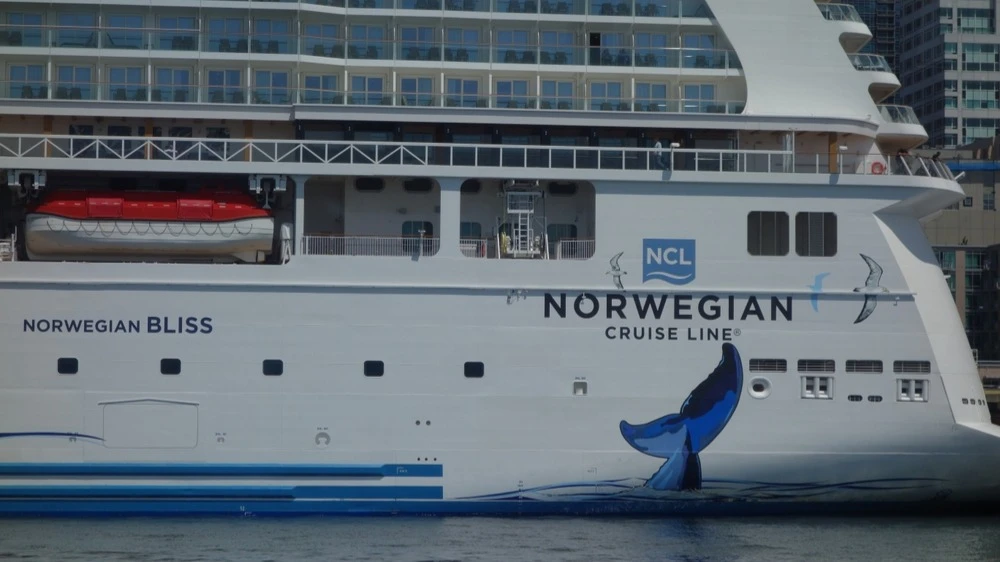Norwegian Cruise's top managers bought shares on the downturn. Should we follow their example?
The cruise operator's stock fell 15% after a weak quarterly report, but management seized the moment to buy

Three top executives of cruise operator Norwegian Cruise bought its shares after their recent decline. Quotes of the company fell by 15% after its quarterly revenue fell short of analysts' forecasts. Norwegian Cruise shares have fallen 26% since the beginning of the year, but so far analysts remain optimistic about them and consider them attractive to buy.
Details
Three top executives at Norwegian Cruise Line bought back shares in the company after they plummeted 15% last week following the release of its third-quarter report, Barron's reported .
According to documents filed with the SEC, President and CEO Harry Sommer purchased 25,000 shares at an average price of $18.52 apiece. After the transaction, his stake grew to 720,728 shares. The aggregate value of this stake at the closing price on November 7 ($19.07) is valued at approximately $13.7 million.
On the same day, Executive Vice President and Chief Financial Officer Mark Kempa bought 10,635 shares at $18.53 a share. He now directly owns 369,352 shares, valued at more than $7 million.
A separate SEC form shows that luxury segment director Jason Montague also bought 13,400 shares at about $18.81 apiece. These securities are held through a trust, in addition to the 52,391 shares held by him personally.
What about the stock
Norwegian Cruise Line shares have fallen more than 26% since the beginning of the year, lagging behind competitors: Carnival added 7.3% and Royal Caribbean Group added 11%.
As Simply Wall Street writes, the most common analysts' valuation scenario indicates that the stock is undervalued by 35.9%. The fair value is estimated at $29.74 versus the current $19.07.
Norwegian is actively redeveloping its private island Great Stirrup Cay into a mixed-use resort with a Great Tides water park and separate areas for families and adults, Simply Wall Street specifies. The project is designed to cater for the growing demand for family travel, which should boost revenues through high spend on board, high occupancy and price stability.
However, analysts warn that a high debt load of $12.7 billion could limit earnings growth potential and cast doubt on the optimistic scenario, Simply Wall Street points out.
Morgan Stanley analyst Stephen Grambling on November 10 lowered his target price on Norwegian shares from $27 to $25, maintaining a "neutral" rating, TipRanks reports. He said the company's third-quarter results were broadly in line with the bank's forecasts, but the drop in average revenue per passenger per day has raised doubts about whether the cruise industry's pricing dynamics are "normalizing" or "deteriorating" after several years of growth. Following the report's release, the analyst also lowered EBITDA guidance for 2025-2027 by about 1%.
The market mostly considers Norwegian securities attractive for buying. According to MarketWatch, the majority of analysts tracking the company's shares - 16 - recommend buying them, while another seven recommend holding them.
Context
Norwegian Cruise Line Holdings released its financial results for the third quarter of 2025 on Nov. 4, reporting record quarterly revenue of $2.9 billion, up 5 percent from the same period in 2024.
Adjusted earnings per share (EPS) amounted to $1.20, exceeding analysts' forecasts ($1.14) and demonstrating a 17% year-over-year growth, Insider Monkey writes . These indicators, according to the publication, testify to the stability of the business, the broad appeal of the multi-brand portfolio and the effective implementation of the company's strategy.
However, Norwegian's results were below analysts' expectations for revenue - the actual figure came in at $2.94 billion versus a consensus forecast of $3.02 billion. The company also lowered its full-year forecast for net yield, which is considered the most accurate reflection of cruise operators' pricing performance.
Norwegian acknowledged that the rise in family bookings is boosting cabin occupancy, but at the same time lowering the average price, The Wall Street Journal reported.
"When a single cabin accommodates three or four people, the price per passenger is lower, which puts moderate pressure on overall profitability," the company explained.
However, management emphasized that the focus on family travel is a conscious strategic bet to improve margins and long-term growth.
This article was AI-translated and verified by a human editor
